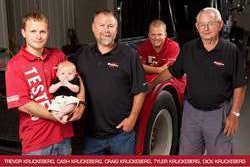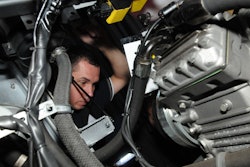Cost conscious fleets have turned to remanufactured parts for years, and lines of customers are getting longer. Very few aftermarket segments have a head of steam like reman parts.
Recent movement in Washington may actually have a positive impact on trucking for once, specifically manufacturers of reman components.
U.S. Reps. Gary Peters (D-Mich.) and James Lankford (R-Okla.) have introduced the Federal Vehicle Repair Cost Savings Act of 2014 (H.R. 4056), which encourages civilian federal fleet managers to use remanufactured parts when maintaining the fleet, noting the environmental, economic and product performance benefits associated with their usage.
Motor & Equipment Remanufacturers Association (MERA), a division of Motor & Equipment Manufacturers Association (MEMA), has thrown its support behind the bill.
Citing a March 2013 Government Accountability Office report, MEMA says there are approximately 588,000 vehicles in the civilian federal fleet. H.R. 4056 encourages the use of remanufactured parts in maintaining the fleet, thereby realizing the economic cost savings while preserving quality and performance.
“In a 2012 report from the U.S. International Trade Commission, the United States is the world’s largest producer, consumer and exporter of remanufactured goods,” says Steve Handschuh, president and CEO, MEMA, who adds the industry supports more than 180,000 hard working men and women in the U.S.
And they’re finding more support at parts counters than ever before.
According to a recent Frost & Sullivan report, over the next five years fleet managers are expected to spend a record amount of dollars on remanufactured components, along with buying fewer parts thanks to improved quality.
The study suggests the entry of advanced Class 6-8 powertrain systems that comply with new emission regulations will drive revenues to record heights for the North American remanufactured replacement components market through 2020.
“The enhanced reliability and availability of remanufactured components means that these products will continue to thrive in the face of stiff competition from new, non-original replacement parts,” says Frost & Sullivan Automotive and Transportation Research Analyst Anuj Monga.
But increased quality has become a double-edged sword in the marketplace. Unit shipments of remanufactured engines, transmissions, and clutches are expected to decline because of improving original equipment quality and increasing competition from new replacement parts.
The addition of newer and refined components to the powertrain system could still pose a challenge, as the lack of cores will lead to the use of newer parts in component assemblies, thereby escalating final costs.
North American parts buyers are expected to see an increase in unit pricing from 1.5 percent to 5.5 percent per year.
Partnerships are also expected to form in the trenches where OEMs and remanufacturing suppliers used to do battle. The study says partnerships with OEMs will be vital for remanufacturers of enhanced powertrain components to not only access key proprietary information, but also capitalize on the installed base of different OEMs.
Remanufactured parts have long crawled from the shadows of the junkyard and have firmly entrenched themselves as reliable replacement components.












